 Trudie Strobel and Jody Savin
Trudie Strobel and Jody Savin Holocaust survivor Trudie Strobel stands back from her tapestry, taking viewers along for a tour through its threads. The piece, titled “Final Destination,” is filled with dark hues and macabre imagery that contrast the luminous gallery hallway in which it hangs. Around its border, daisies are impaled with barbed wire. Near the edge of the frame, death camp prisoners huddle in their beds, their faces blank, bodies obscured by midnight purple blankets.
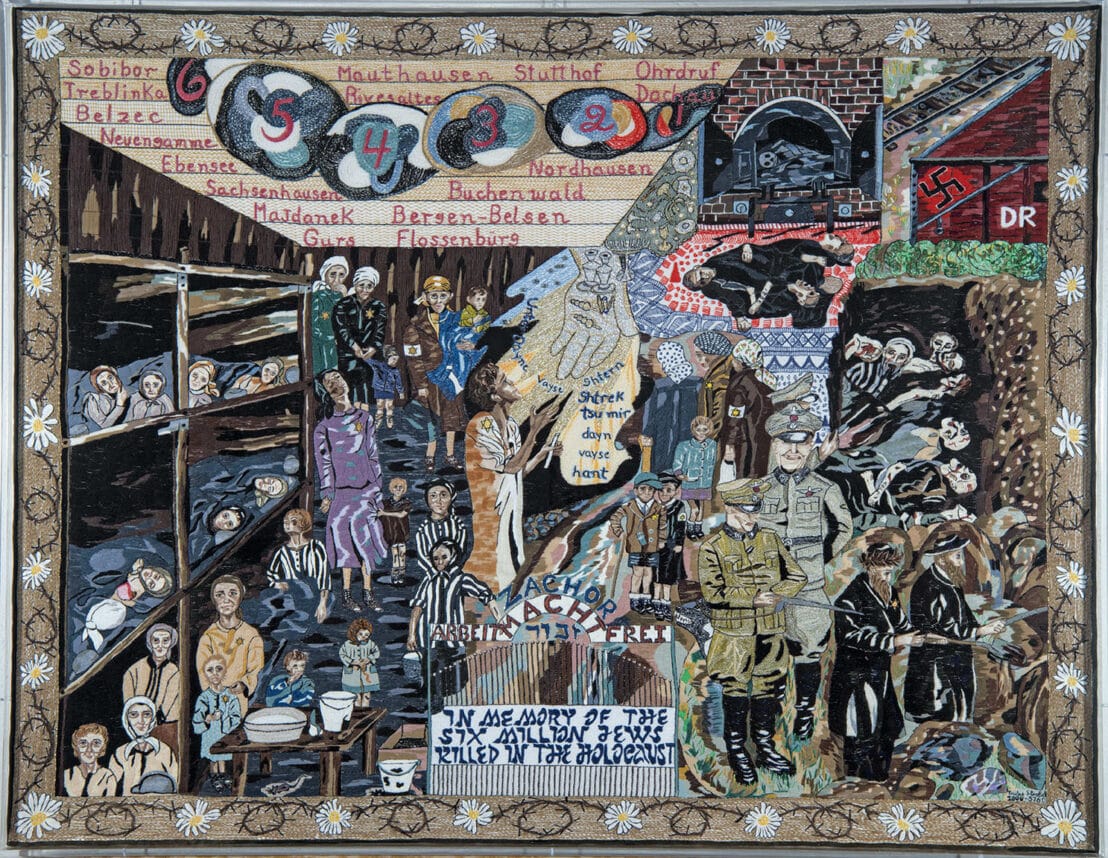
“In this piece, I try to show the end station of the Holocaust,” says Strobel. The tapestry, she says, depicts the cycle of Jews’ incarceration in concentration camps.
“This is kind of the rotation,” she says, motioning to scenes stitched into the piece. “We got into the camp, as you can see the desperation on everyone’s faces. They were emaciated, hungry, tired, afraid.”
“Bunk beds,” she says, pointing to the tapestry’s top corner. “We slept two and three in one bunk bed.”
Fighting back tears, Strobel describes in vivid detail a scene she depicts in another quadrant of the tapestry.
“We were herded in, we came in, Nazis were standing and watching how the rabbis were digging their own graves,” she says. “Their own graves—they were going to be buried here.”
The harrowing scene is depicted in the bottom corner of “Final Destination,” a reminder to viewers that the tragedy of the Holocaust can never be forgotten—and never be allowed to happen again.
Strobel, 85, is a renowned tapestry artist and Holocaust survivor who has used a needle and thread to produce dozens of intricate works that depict her childhood incarceration at Auschwitz—and serve as a stark reminder of the horrors of the Holocaust.
Sewing, Strobel maintains, has helped her process the traumas of her youth.
There were plenty.
Strobel was born in present-day Ukraine, where her father worked as a farmer. While Strobel was just a young child, he was exiled to Siberia by Soviet Premier Josef Stalin, leaving Strobel and her mother to survive on their own.
Four years later, their lives were again thrust into chaos. Nazi troops forced the pair on a more than 600-mile march to Poland where, after spending a short time in the Loche ghetto, they were sent to Auschwitz.
Strobel’s mother, the artist says, possessed a gift that saved the pair’s lives: sewing. A master seamstress, Strobel’s mother was deemed essential to the Nazi war effort, allowing the pair to survive in silence.
Strobel and her mother were eventually liberated by American troops. After spending several years in Germany, Strobel immigrated to the United States. In Chicago, Strobel met her future husband, Hans, with whom she would move to California and have two children.
Eventually, Strobel’s traumas caught up to her. In middle age, she began to struggle with the weight of her childhood experiences and slipped into a bout of depression. A therapist recommended that she turn to art to express her complex emotions and begin to heal. If she had trouble speaking about her experiences during the Holocaust, the therapist said, perhaps she should draw them instead.
“I chose to draw with needle and thread,” Strobel said.
Strobel began to produce ornate tapestries that capture the tragedy of the Holocaust. These works caught the eye of Jody Savin, a writer and filmmaker from Pasadena. While Savin’s daughter was preparing for her Bat Mitzvah, a rabbi suggested that she meet with Strobel. Savin accompanied her daughter to the meeting and was amazed at Strobel’s remarkable story—and her extraordinary tapestries.
At Strobel’s house, “we encountered this quiet artist and a treasure trove of artwork,” said Savin. “Trudie started to tell us her story, and I knew that I had to write this book.”
Savin proceeded to author “Stitched & Sewn: The Life-Saving Art of Holocaust Survivor Trudie Strobel,” a book that explored Strobel’s life, work and legacy.
“When Jody wrote my story, our souls merged,” Strobel said. “This is a story of hope. And this is a story of the healing power of art.”
Savin worked with photographer Ann Elliott Cutting to photograph Strobel’s tapestries for the book. “Final Destination” is one of many that depict the scenes to which Strobel bore witness. Another poignant piece highlighted in the book is “Russia, 1942.” In this tapestry, Strobel depicts a moment from her childhood. At the center of the work is a young girl—Strobel—clad in a green coat with tears streaming down her face. An SS Officer, donning a jet-black overcoat, seizes from Strobel’s arms a play doll—a treasured gift she received from her father before his exile. Surrounding the scene is a frame consisting of Stars of David linked together, again, by barbed wire.

Near the bottom center of the frame is a word written in English: “Remember!”
To remember is exactly what Savin and Strobel have sought to do. In addition to “Stitched and Sewn,” Savin and Strobel have traveled the country to speak to students and other audiences about Strobel’s story.
Savin noted that a majority of states do not to not mandate Holocaust education in public schools, leaving students unaware, misinformed or vulnerable to disinformation about the tragedy that killed six million Jews.
“We are deeply concerned about the proliferation of prejudice, intolerance, racism and antisemitism in this country,” said Savin. “And so we want to do whatever we can to stem that tide of hate, because we know where it can lead.”
Recently, Savin and her husband, filmmaker Randall Miller, have sought to turn Strobel’s story into a documentary. Miller, who is known for his many collaborations with the late Alan Rickman, including the cult classic wine film “Bottle Shock,” is an experienced documentarian who said he is committed to using film as a vehicle to drive conversations about important social issues, including antisemitism.
“What happened to Trudie cannot happen again ever,” said Miller. “We all need to work to ensure that we live in a tolerant community and a tolerant world. We are currently raising the funds to make the documentary and are looking for donors. We want to complete this soon as soon as we can, because Trudie’s message needs to be heard.”
As the Holocaust recedes more than eight decades into history, Strobel’s story remains as relevant as ever, according to Savin.
“Trudie often says that the most beautiful garden is made of a wide range of unique and colorful flowers,” said Savin. “When she speaks to an audience, she explains that each student is another beautiful flower. It is a lesson in the beauty and miracle of human diversity.
“Trudie cautions all who will listen not to look down on the person next to them,” continued Savin, “because we are all equally valuable and we should respect one another.”








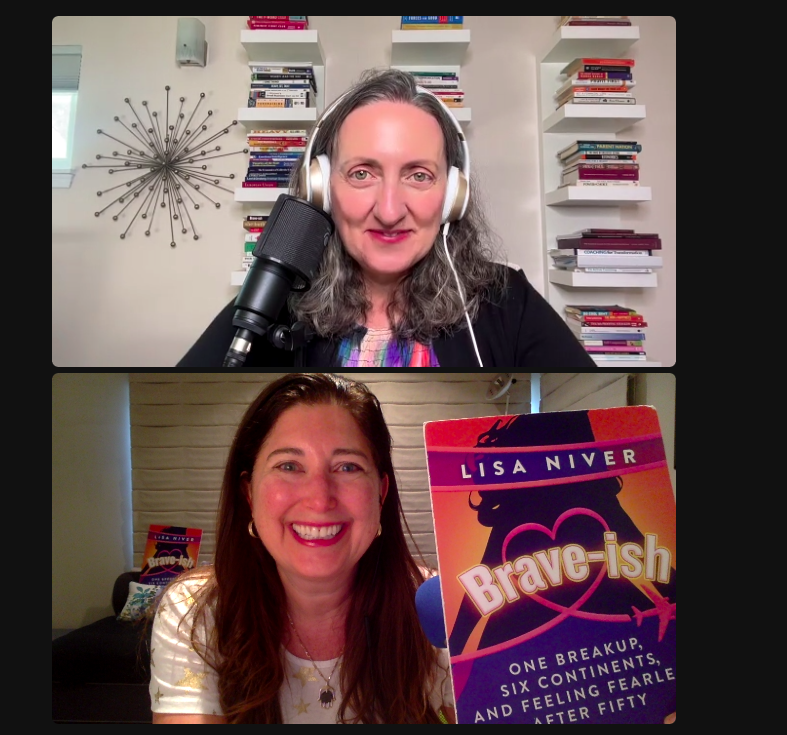
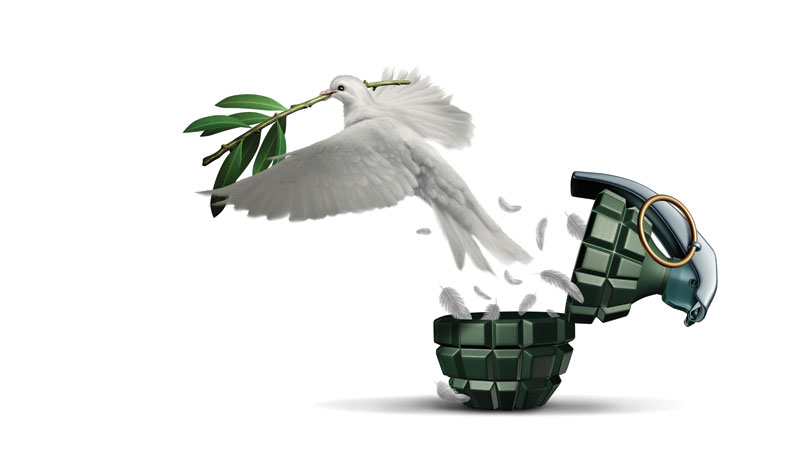

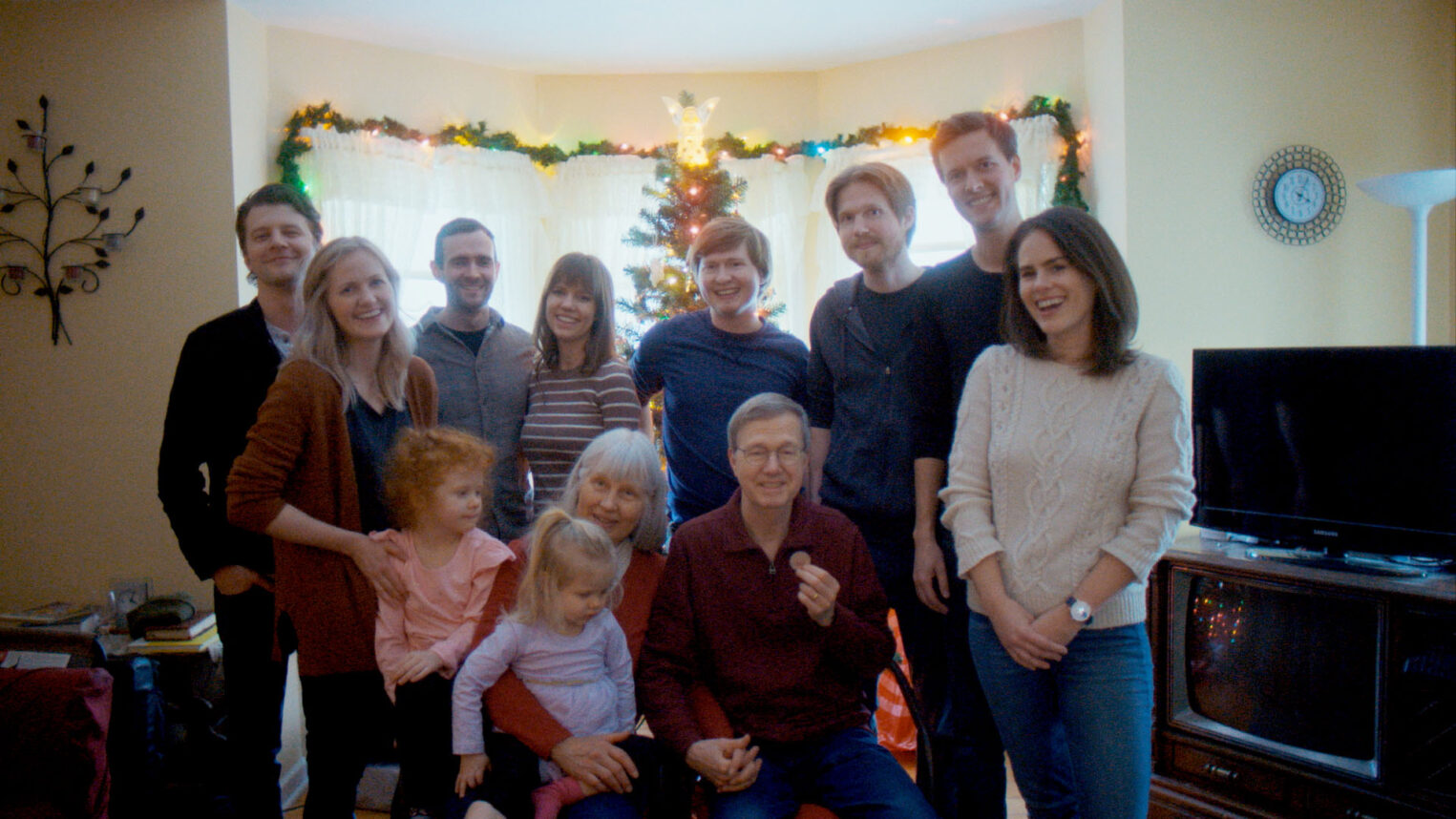


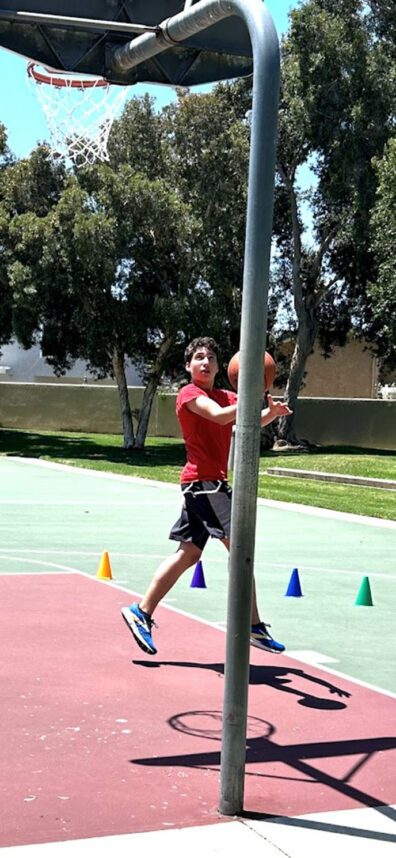
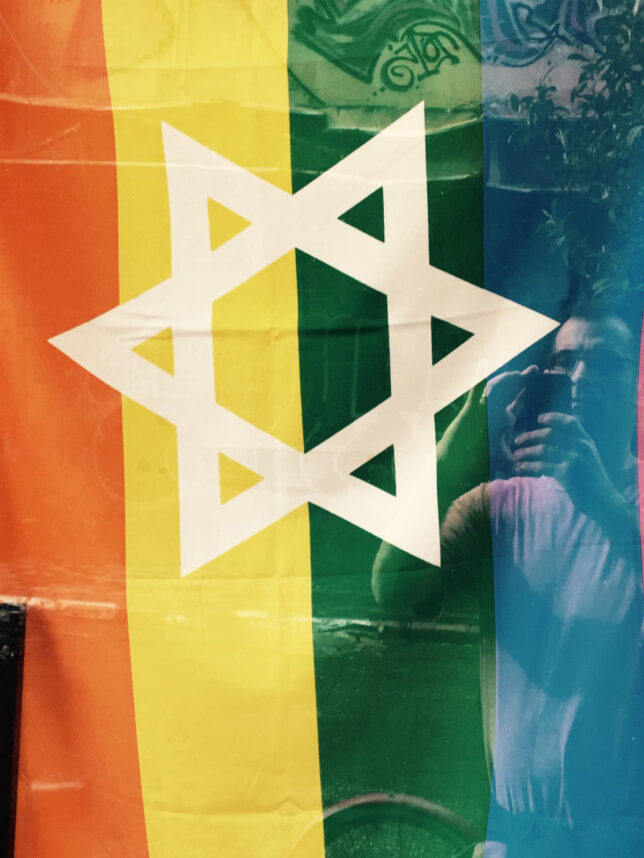



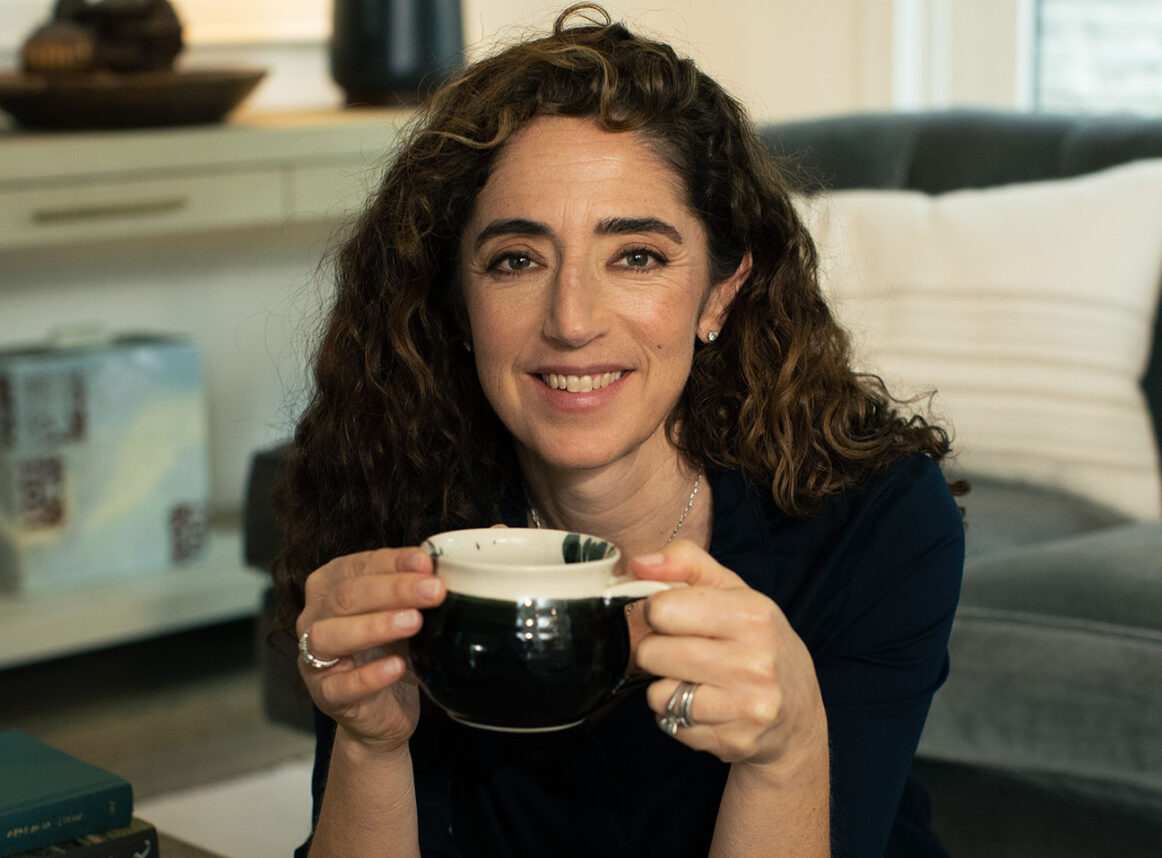

 More news and opinions than at a Shabbat dinner, right in your inbox.
More news and opinions than at a Shabbat dinner, right in your inbox.